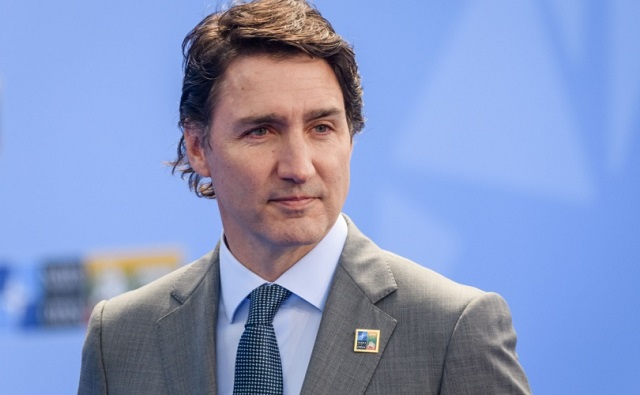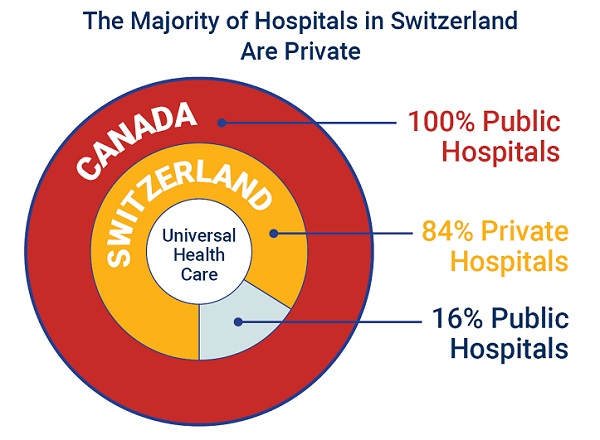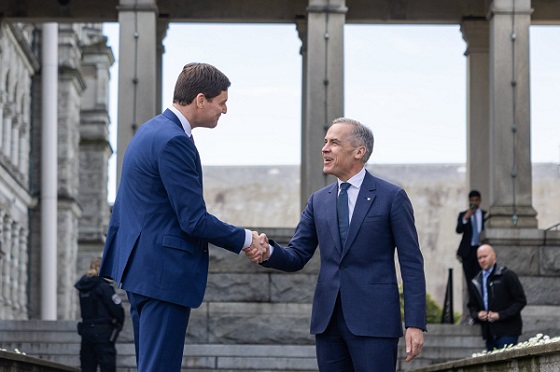Fraser Institute
Cost of Ottawa’s gun ban fiasco may reach $6 billion

From the Fraser Institute
By Gary Mauser
According to the government, it has already spent $67.2 million, which includes compensation for 60 federal employees working on the “buyback,” which still doesn’t exist.
Four years ago, the Trudeau government banned “1,500 types” of “assault-style firearms.” It’s time to ask if public safety has improved as promised.
This ban instantly made it a crime for federally-licensed firearms owners to buy, sell, transport, import, export or use hundreds of thousands formerly legal rifles and shotguns. According to the government, the ban targets “assault-style weapons,” which are actually classic semi-automatic rifles and shotguns that have been popular with hunters and sport shooters for more than 100 years. When announcing the ban, the prime minister said the government would confiscate the banned firearms and their legal owners would be “grandfathered” or receive “fair compensation.” That hasn’t happened.
As of October 2024, the government has revealed no plans about how it will collect the newly-banned firearms nor has it made any provisions for compensation in any federal budget since the announcement in 2020. Originally, the government enacted a two-year amnesty period to allow compliance with the ban. This amnesty expired in April 2022 and has been twice extended, first to Oct. 30, 2023, then to Oct. 30, 2025.
Clearly, the ban—which the government calls a “buyback”—has been a gong show from the beginning. Since Trudeau’s announcement four years ago, virtually none of the banned firearms have been surrendered. The Ontario government refuses to divert police resources to cooperate with this federal “buyback” scheme. The RCMP’s labour union has said it’s a “misdirected effort when it comes to public safety.” The Canadian Sporting Arms & Ammunition Association, which represents firearms retailers, said it will have “zero involvement” in helping confiscate these firearms. Even Canada Post wants nothing to do with Trudeau’s “buyback” plan. And again, the government has revealed no plan for compensation—fair or otherwise.
And yet, according to the government, it has already spent $67.2 million, which includes compensation for 60 federal employees working on the “buyback,” which still doesn’t exist.
It remains unclear just how many firearms the 2020 ban includes. The Parliamentary Budget Officer estimates range between 150,000 to more than 500,000, with an estimated total value between $47 million and $756 million. These costs only include the value of the confiscated firearms and exclude the administrative costs to collect them and the costs of destroying the collected firearms. The total cost of this ban to taxpayers will be more than $4 billion and possibly more than $6 billion.
Nevertheless, while the ban of remains a confusing mess, after four years we should be able to answer one key question. Has the ban made Canadians safer?
According to Statistics Canada, firearm-related violent crime swelled by 10 per cent from 2020 to 2022 (the latest year of comparable data), from 12,614 incidents to 13,937 incidents. And in “2022, the rate of firearm-related violent crime was 36.7 incidents per 100,000 population, an 8.9% increase from 2021 (33.7 incidents per 100,000 population). This is the highest rate recorded since comparable data were first collected in 2009.”
Nor have firearm homicides decreased since 2020. Perhaps this is because lawfully-held firearms are not the problem. According to StatsCan, “the firearms used in homicides were rarely legal firearms used by their legal owners.” However, crimes committed by organized crime have increased by more than 170 per cent since 2016 (from 4,810 to 13,056 crimes).
Meanwhile, the banned firearms remain locked in the safes of their legal owners who have been vetted by the RCMP and are monitored nightly for any infractions that might endanger public safety.
Indeed, hunters and sport shooters are among the most law-abiding people in Canada. Many Canadian families and Indigenous peoples depend on hunting to provide food for the family dinner table through legal harvesting, with the added benefit of getting out in the wilderness and spending time with family and friends. In 2015, hunting and firearm businesses alone contributed more than $5.9 billion to Canada’s economy and supported more than 45,000 jobs. Hunters are the largest contributors to conservation efforts, contributing hundreds of millions of dollars to secure conservation lands and manage wildlife. The number of licensed firearms owners has increased 17 per cent since 2015 (from 2.026 million to 2.365 million) in 2023.
If policymakers in Ottawa and across the country want to reduce crime and increase public safety, they should enact policies that actually target criminals and use our scarce tax dollars wisely to achieve these goals.
Author:
Fraser Institute
Long waits for health care hit Canadians in their pocketbooks

From the Fraser Institute
Canadians continue to endure long wait times for health care. And while waiting for care can obviously be detrimental to your health and wellbeing, it can also hurt your pocketbook.
In 2024, the latest year of available data, the median wait—from referral by a family doctor to treatment by a specialist—was 30 weeks (including 15 weeks waiting for treatment after seeing a specialist). And last year, an estimated 1.5 million Canadians were waiting for care.
It’s no wonder Canadians are frustrated with the current state of health care.
Again, long waits for care adversely impact patients in many different ways including physical pain, psychological distress and worsened treatment outcomes as lengthy waits can make the treatment of some problems more difficult. There’s also a less-talked about consequence—the impact of health-care waits on the ability of patients to participate in day-to-day life, work and earn a living.
According to a recent study published by the Fraser Institute, wait times for non-emergency surgery cost Canadian patients $5.2 billion in lost wages in 2024. That’s about $3,300 for each of the 1.5 million patients waiting for care. Crucially, this estimate only considers time at work. After also accounting for free time outside of work, the cost increases to $15.9 billion or more than $10,200 per person.
Of course, some advocates of the health-care status quo argue that long waits for care remain a necessary trade-off to ensure all Canadians receive universal health-care coverage. But the experience of many high-income countries with universal health care shows the opposite.
Despite Canada ranking among the highest spenders (4th of 31 countries) on health care (as a percentage of its economy) among other developed countries with universal health care, we consistently rank among the bottom for the number of doctors, hospital beds, MRIs and CT scanners. Canada also has one of the worst records on access to timely health care.
So what do these other countries do differently than Canada? In short, they embrace the private sector as a partner in providing universal care.
Australia, for instance, spends less on health care (again, as a percentage of its economy) than Canada, yet the percentage of patients in Australia (33.1 per cent) who report waiting more than two months for non-emergency surgery was much higher in Canada (58.3 per cent). Unlike in Canada, Australian patients can choose to receive non-emergency surgery in either a private or public hospital. In 2021/22, 58.6 per cent of non-emergency surgeries in Australia were performed in private hospitals.
But we don’t need to look abroad for evidence that the private sector can help reduce wait times by delivering publicly-funded care. From 2010 to 2014, the Saskatchewan government, among other policies, contracted out publicly-funded surgeries to private clinics and lowered the province’s median wait time from one of the longest in the country (26.5 weeks in 2010) to one of the shortest (14.2 weeks in 2014). The initiative also reduced the average cost of procedures by 26 per cent.
Canadians are waiting longer than ever for health care, and the economic costs of these waits have never been higher. Until policymakers have the courage to enact genuine reform, based in part on more successful universal health-care systems, this status quo will continue to cost Canadian patients.
Business
84% of Swiss hospitals and 60% of hospitalizations are in private facilities, and they face much lower wait times

From the Fraser Institute
If Canada reformed to emulate Switzerland’s approach to universal health care, including its much greater use of private sector involvement, the country would deliver far better results to patients and reduce wait times, finds a new study published today by the Fraser Institute, an independent, non-partisan Canadian policy think-tank.
“The bane of Canadian health care is lack of access to timely care, so it’s critical to look to countries like Switzerland with more successful universal health care,” said Yanick Labrie, senior fellow at the Fraser Institute and author of Integrating Private Health Care Into Canada’s Public System: What We Can Learn from Switzerland. The study highlights how Switzerland successfully integrates the private sector into their universal health-care system, which consistently outperforms Canada on most health-care metrics, including wait times.
For example, in 2022, the percentage of patients who waited less than two months for a specialist appointment was 85.3 per cent in Switzerland compared to just 48.3 per cent in Canada.
In Switzerland, 84.2 per cent of all hospitals are private (either for-profit or not-for profit) institutions, and the country’s private hospitals provide 60.2 per cent of all hospitalizations, 60.9 per cent of all births, and 67.1 per cent of all operating rooms.
Crucially, Swiss patients can obtain treatment at the hospital of their choice, whether located inside or outside their geographic location, and hospitals cannot discriminate against patients, based on the care required.
“Switzerland shows that a universal health-care system can reconcile efficiency and equity–all while being more accessible and responsive to patients’ needs and preferences,” Labrie said.
“Based on the success of the Swiss model, provinces can make these reforms now and help improve Canadian health care.”

Integrating Private Health Care into Canada’s Public System: What We Can Learn from Switzerland
- Access to timely care remains the Achilles’ heel of Canada’s health systems. To reduce wait times, some provinces have partnered with private clinics for publicly funded surgeries—a strategy that has proven effective, but continues to spark debate in Canada.
- This study explores how Switzerland successfully integrates private health care into a universal public system and considers what Canada can learn from this model.
- In Switzerland, universal coverage is delivered through a system of managed competition among 44 non-profit private insurers, while decentralized governance allows each of the 26 cantons to coordinate and oversee hospital services in ways that reflect local needs and priorities.
- Nearly two-thirds of Swiss hospitals are for-profit institutions; they provide roughly half of all hospitalizations, births, and hospital beds across the country.
- All hospitals are treated equally—regardless of legal status—and funded through the same activity-based model, implemented nationwide in 2012.
- The reform led to a significant increase in the number of cases treated without a corresponding rise in expenditures per case, suggesting improved efficiency, better use of resources, and expanded access to hospital care.
- The average length of hospital stay steadily decreased over time and now stands at 4.87 days in for-profit hospitals versus 5.53 days in public ones, indicating faster patient turnover and more streamlined care pathways.
- Hospital-acquired infection rates are significantly lower in private hospitals (2.7%) than in public hospitals (6.2%), a key indicator of care quality.
- Case-mix severity is as high or higher in private hospitals, countering the notion that they only take on simpler or less risky cases.
- Patient satisfaction is slightly higher in private hospitals (4.28/5) than in public ones (4.17/5), reflecting strong user experience across multiple dimensions.
- Canada could benefit from regulated competition between public and private providers and activity-based funding, without breaching the Canada Health Act.

-

 Alberta1 day ago
Alberta1 day agoAlberta’s grand bargain with Canada includes a new pipeline to Prince Rupert
-

 Bruce Dowbiggin15 hours ago
Bruce Dowbiggin15 hours agoWOKE NBA Stars Seems Natural For CDN Advertisers. Why Won’t They Bite?
-

 Business1 day ago
Business1 day agoCarney’s European pivot could quietly reshape Canada’s sovereignty
-

 Energy15 hours ago
Energy15 hours agoCould the G7 Summit in Alberta be a historic moment for Canadian energy?
-

 Crime15 hours ago
Crime15 hours agoMinnesota shooter arrested after 48-hour manhunt
-

 Crime2 days ago
Crime2 days agoManhunt on for suspect in shooting deaths of Minnesota House speaker, husband
-

 conflict8 hours ago
conflict8 hours agoIsrael bombs Iranian state TV while live on air
-

 Aristotle Foundation13 hours ago
Aristotle Foundation13 hours agoThe Canadian Medical Association’s inexplicable stance on pediatric gender medicine




